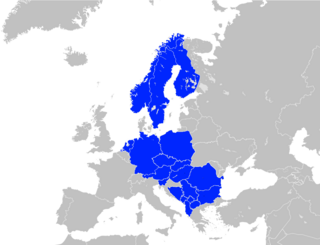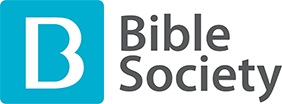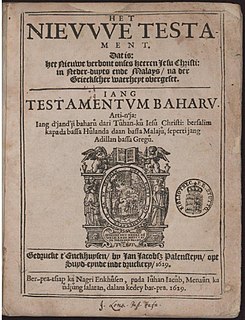Related Research Articles

Romani is an Indo-Aryan macrolanguage of the Romani communities. According to Ethnologue, seven varieties of Romani are divergent enough to be considered languages of their own. The largest of these are Vlax Romani, Balkan Romani (600,000), and Sinte Romani (300,000). Some Romani communities speak mixed languages based on the surrounding language with retained Romani-derived vocabulary – these are known by linguists as Para-Romani varieties, rather than dialects of the Romani language itself.

George Henry Borrow was an English writer of novels and of travel books based on his personal experiences in Europe. During his travels, he developed a close affinity with the Romani people of Europe, who figure prominently in his work. His best-known books are The Bible in Spain, and the novels Lavengro and The Romany Rye recalling his time with the English Romanichal (Gypsies).

The Bible has been translated into many languages from the biblical languages of Hebrew, Aramaic and Greek. As of September 2020 the full Bible has been translated into 704 languages, the New Testament has been translated into an additional 1,551 languages and Bible portions or stories into 1,160 other languages. Thus at least some portions of the Bible have been translated into 3,415 languages.

The Peshitto is the standard version of the Bible for churches in the Syriac tradition, including the Maronite Church, the Chaldean Catholic Church, the Syriac Catholic Church, the Syriac Orthodox Church, the Malabar Independent Syrian Church ,the Syro Malankara Catholic Church, the Malankara Marthoma Syrian Church, the Assyrian Church of the East and the Syro Malabar Catholic Church.

The British and Foreign Bible Society, often known in England and Wales as simply the Bible Society, is a non-denominational Christian Bible society with charity status whose purpose is to make the Bible available throughout the world.
Guernésiais, also known as Dgèrnésiais, Guernsey French, and Guernsey Norman French, is the variety of the Norman language spoken in Guernsey. It is sometimes known on the island simply as "patois". As one of the langues d'oïl, it has its roots in Latin, but has had strong influence from both Old Norse and English at different points in its history.
Angloromani or Anglo-Romani is a mixed language involving the presence of Romani vocabulary and syntax in the English used by descendants of Romanichal Travellers in the United Kingdom, Australia, Canada, New Zealand, United States, and South Africa.
The Bible in Spain, published in London in 1843, is a travel book by the British writer George Borrow (1803–1881). It was a popular work when it appeared, running through several editions.
Caló is a language spoken by the Spanish and Portuguese Romani. It is a mixed language based on Romance grammar, with an adstratum of Romani lexical items through language shift by the Romani community. It is often used as an argot, a secret language for discreet communication amongst Iberian Romani. Catalan, Galician, Portuguese, and Spanish caló are closely related varieties that share a common root.
Ronga is a Bantu language of the Tswa–Ronga branch spoken just south of Maputo in Mozambique. It extends a little into South Africa. It has about 650,000 speakers in Mozambique and a further 90,000 in South Africa, with dialects including xinyandroma, xikalanga, xidindindi(xizingili),xiputru and isigonde which dominates the northern parts of kwazulu natal(ka-ngwanase).
There are biblical translations into Hawaiian and Hawaii Pidgin which are the two main languages of Hawaii.
Bible translations into Oceanic languages have a relatively closely related and recent history.
Biblical translations into the indigenous languages of North and South America have been produced since the 16th century.

The Athabaskan language family is divided into the Northern Athabaskan, Pacific Coast Athabaskan and Southern Athabaskan groups. The full Bible has been translated into two Athabaskan languages, and the complete New Testament in five more. Another five have portions of the Bible translated into them. There are no Pacific Coast Athabaskan languages with portions of the Bible translated into them.

Malaysian and Indonesian Bible translations have a lot of common history up until the modern era. Apart from the shared Malay language which historically was the lingua franca of the Malay archipelago and forms the basis for the national languages of Indonesia and Malaysia today, portions of the Bible have been translated into a variety of indigenous languages in the region.
The Bible, or portions of it, have been translated into over 1,000 languages of Africa. Many of these are indexed by the Forum of Bible Agencies, Find.Bible site and available online in text and audio form, as print on demand versions, or through churches and book sellers. This effort continues. Not all are (yet) listed below.
The first portion of the Bible, the Gospel of John, in a Tibetic language was translated by Moravian Church missionaries William Heyde, Edward Pagel, and Heinrich August Jäschke, and later Dr. August Francke. It was printed in 1862 at Kyelang capital of Lahul in Kashmir. The whole New Testament was printed in 1885 in Ladakh. Another version was translated in 1903. So as not to have the problem of various dialectal differences it was translated into classical Tibetan, but this was not understood by most people. Yoseb Gergen, a Tibetan Christian translated the entire Bible, complete in 1935. This version was translated into a dialect of Tibetan Gergen had accidentally stumbled across, and which was understandable by all Tibetans. It was finally published in 1948. This is known in India as the Tibetan OV Bible. Eliya Tsetan Phuntshog published a New Testament in 1970. There is currently a project going on to translate the Bible into the East Tibetan dialect.
The New Testament was first published in Scottish Gaelic in 1767 and the whole Bible was first published in 1801. Prior to these, Gaels in Scotland had used translations into Irish.
The history of all Bible translations into Slavic languages begins with Bible translations into Church Slavonic. Other languages include:

The translation of the Bible into the Manchu language was started in the 18th century, but only the translation of the New Testament has been published.
References
- ↑ Embéo e Majaró Lucas by George Borrow at the Gutenberg Project.
- ↑ "E Nevi Viasta o Psalmo 2004". The Global Bible Project.